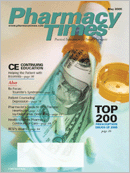Publication
Article
Pharmacy Times
NATION FACES PHARMACIST SHORTAGE
The next 10 years could see a shiftin the pharmacy industry. A survey of1470 pharmacists revealed that ashortage looms, as aging male practitionersretire and workers of both genderschoose part-time over full-timework, according to a study by thePharmacy Manpower Project Inc.
Almost 46% of the practicing pharmacistsare now female—up from31% in 1990 and rising slightly since2000. Of these women, >25% areworking part-time. The survey alsoshowed that pharmacists—particularlymen—are getting older on average.More than 40% of the male pharmacistsare over 55, compared with just10% of the female pharmacists.Furthermore, the survey indicatedthat, overall, both full-and part-timepharmacists—in all pharmacy practicesettings—are working less than theydid 4 years ago, while earning an averageof 38% more for their time.
The shrinking workforce is problematic,as the need for prescription servicescontinues to rise. During theirworkday, pharmacists want more timeto focus on patient care, beyond justfilling prescriptions. The respondentsindicated that nearly half of their timeis spent filling prescriptions, much as itwas in 2000. Patient consultationtakes up 19% of pharmacists' time, followedby business management (16%)and drug-use management (13%).
Of the respondents, >1 of every 2reported that workload was high orexcessively high, with 58% saying thattheir workload had increased over theprior year. Stress also was a factor.Pharmacists blamed inadequate staff,workloads that may hamper the levelof service they can provide, problemswith difficult patients, and interruptionsby individuals and phone calls.







